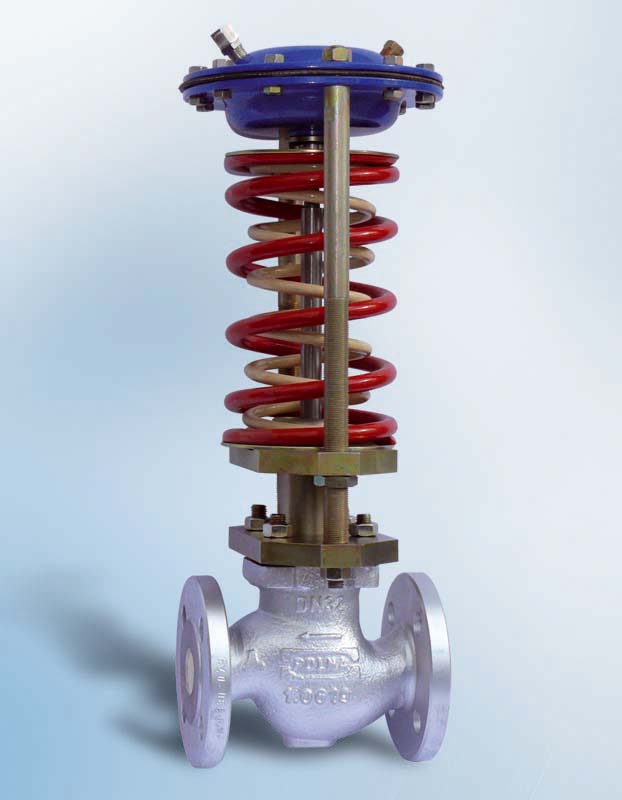
PRESSURE REDUCER RCP-8
FUNCTION
The reducer is designed to maintain a constant pressure value downstream the reducer’s valve regardless of fluctuations in the supply pressure. It is used in steam, cold and hot water, air and gas installations in order to protect them from excessive pressure increase. It can also be used for other media provided that it is agreed with the manufacturer.
CONSTRUCTION
The reducer consists of three main sets:
• valve (1) with pressure-balanced plug and stem with bellows seal,
• diaphragm actuator (2)
• control pressure adjuster (3)
CHARACTERISTICS
• steel and stainless steel materials used
• maintenance-free bellows seal ensures high efficiency of the reducer
• high tightness of the shut-off due to the application of plugs with PTFE, EPDM and NBR sealings
• design reducing the noise level
• the possibility of fitting with piston or bellows actuators
PRINCIPLE OF OPERATION
Fluid flowing through the valve constitutes the driving force of the regulator. The impulse of regulated pressure, as measured downstream the valve, is applied to the actuator pressure chamber (2). The resulting pressure on the actuator diaphragm is counterbalanced by the spring tension in the adjuster set (3).Thus, a change in the regulated pressure causes valve (1) opening or closing, and allows for keeping the reduced pressure constant at the valve outlet.
Technical data
| Regulator’s Size | DN 15; 20; 25; 32; 40; 50; 65; 80; 100; 125; 150; 200; |
|---|---|
| Nominal pressure | PN 16; 40 |
| Kvs coefficient | Kvs 0,6 ... 250 m3/h |
| Max. fluid temp | 0 / +240°C |
| Setting ranges | 0,1 ... 11,0 bar |
| Flow charakteristic | linear |
| Leakage class | • IV class PN-EN 60534-4 • VI class PN-EN 60534-4 |
| Body Materials | • GP240GH (1.0619) • GX5CrNiMo 19-11-2 (1.4408) |
 37-700 Przemyśl, ul Obozowa 23
37-700 Przemyśl, ul Obozowa 23 np@reduktory.com.pl
np@reduktory.com.pl 16 678 30 20,
16 678 30 20, 
